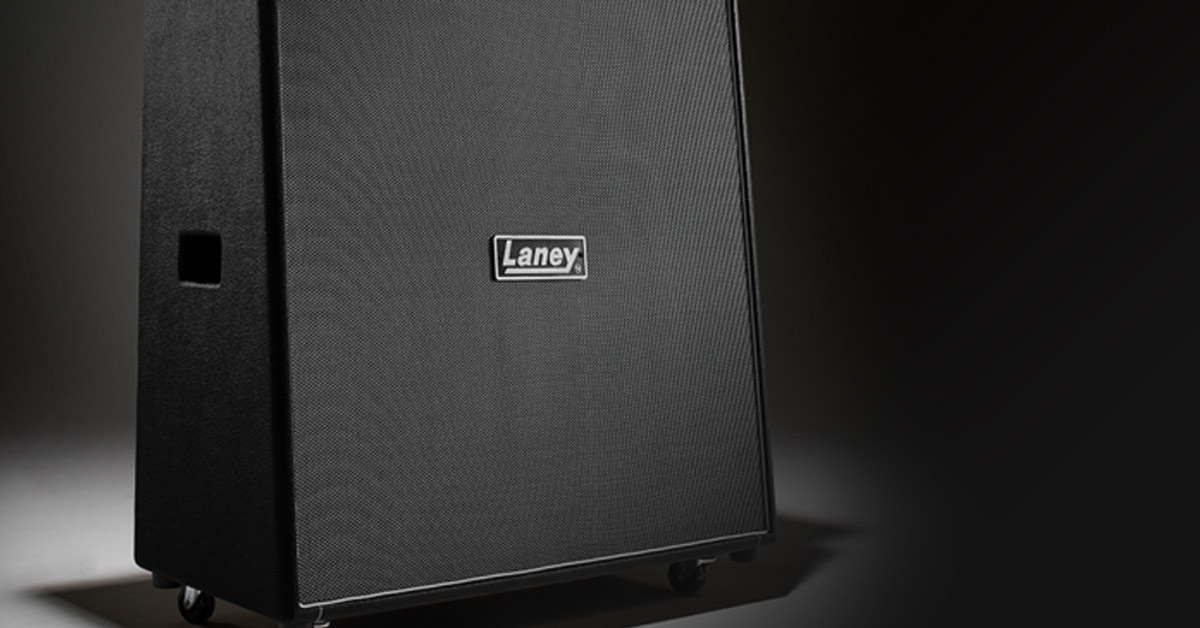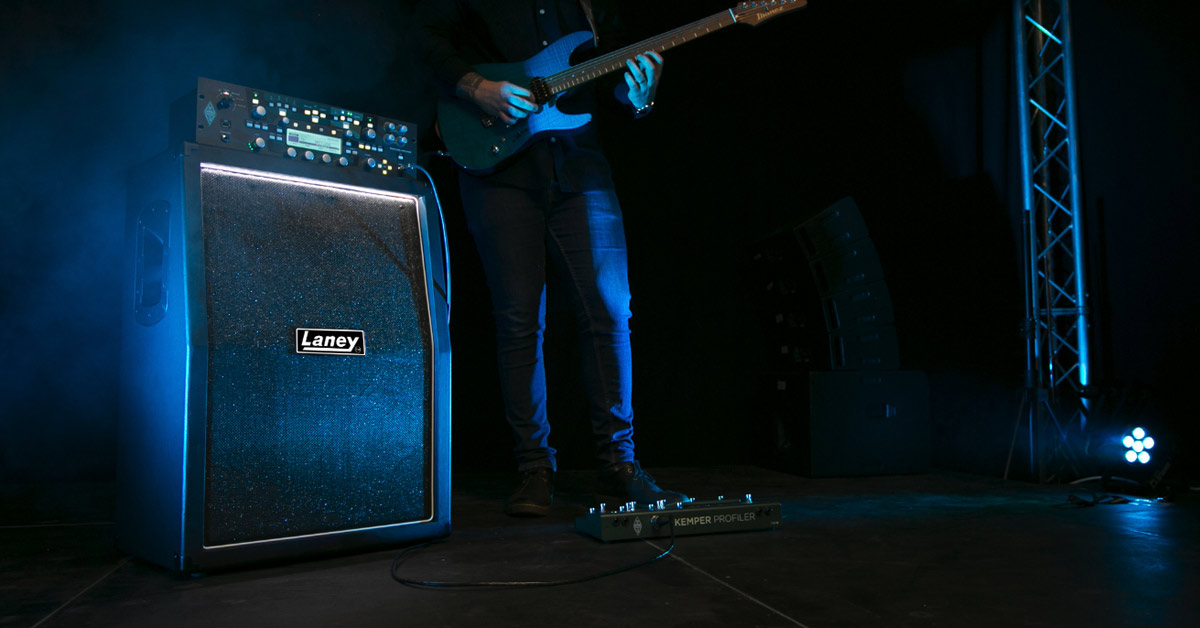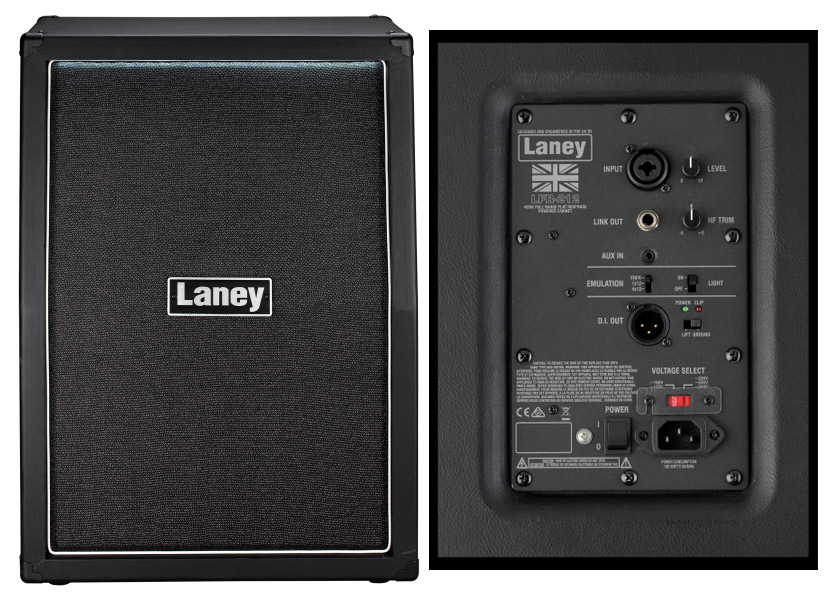Let’s look at FRFR vs Traditional Guitar Cabinets, shall we?
We’re a funny bunch, us guitarists… we’re constantly seeking ways to refine our sound and enhance our playing experience even when we think we already have the perfect setup. There’s always more to try! With the emergence of digital modeling amps and effects, it has opened up a vast sonic landscape for the more traditional guitarists out there (like me). Guitar rigs can change, and often is the case we need a rig for home recording and a rig for live, and anything in between. No longer do we feel the need to have a “one and done” guitar setup.
But one thing that is always overlooked is the guitar cabinet part of our sound. I’ve discussed why guitar cabinets are so important and why guitar speakers are important but unlocking your full potential requires careful consideration of your speaker cabinet when you decide to expand your sonic palette with multiple rigs, namely a digital rig AND traditional/analog rig.
If you’re like me and you’re expanding your sonic prowess with both a traditional guitar set up as well as a digital rig, you might be thinking, can I use the same cabinet for both? Which one is better: FRFR or traditional? Do I need both styles of guitar cabinet? Well, today, I’m going to answer all your questions.
I’m diving into the world of FRFR (Full Range Flat Response) cabinets and comparing them to their traditional counterparts, using Laney amplifiers of course!
A “traditional” guitar cabinet, or guitar cab as we know them is a speaker enclosure specifically designed to project and enhance the sound of an electric guitar amplifier that essentially provides an element of tone or signature sound from the cabinet. Laney’s guitar cabinets, such as the Laney LA412 Supergroup Cabinet, GS212IE Cabinet, LT212 Laney Lionheart guitar cabinet, and smaller Laney LT112 Lionheart 1×12 guitar cabinet, are known for their ability to produce rich, warm, and dynamic tones with a signature flair of their own. These cabinets are typically loaded with specific types of speakers, like Celestion G12H in the LA412 and LT212 models, which contribute to the cabinet’s overall tonal character and response.
Unlike FRFR (Full Range Flat Response) cabinets that aim to provide a flat, uncoloured sound ideal for digital rigs, Laney guitar cabs are designed to add a certain colouration and warmth to the guitar’s sound, enhancing the natural characteristics of your guitar and your amplifier.
Guitar cabinets like these are often preferred by guitarists who want that tactile response and the nuanced interaction between the guitar, amplifier, and cabinet – after all, it’s 33% of your sound! Each cabinet design and choice of speakers in what we know as “traditional” guitar cabinets like what we make here at Laney contributes to a unique sonic footprint, offering a more analog and organic playing experience. This is why traditional cabinets are the best choice for musicians who rely on analog gear and seek the classic tones that have defined many iconic recordings and performances throughout the history of rock and roll – especially ours, because we did after all help invent heavy metal with Tony Iommi!
Pictured: Laney GS212IE 2×12 Cabinet
An FRFR (Full Range Flat Response) guitar cabinet, like the Laney LFR series including models like the LFR-112, LFR-212, and LFR-412, is designed to deliver a flat, uncoloured sound, accurately reproducing the input signal without adding any tonal characteristics. This makes them ideal for digital rigs, where the authenticity of digital amp models and effects is crucial.
We’ve covered this a LOT in other blogs, especially our Laney LFR comparison, but Laney’s FRFR cabinets are engineered for versatility, offering consistent performance across various venues and the ability to handle a wide spectrum of frequencies and even emulate traditional cabinets when you need them to or run low on CPU in your digital modeler. This ensures that every nuance of your digital setup is faithfully presented, making FRFR cabinets best for guitarists who utilise a diverse range of digital tones and effects.
Read our guide to FRFR Cabinets and Why You Need One for your digital rig.
The main difference between traditional guitar cabinets and FRFR (Full Range Flat Response) guitar cabinets is that traditional cabs colour your sound and FRFR cabinets do not. Traditional guitar cabinets are designed to add a specific colouration and signature character to your sound, often enhancing certain frequencies to create a distinct tonal signature. In contrast, FRFR guitar cabinets aim to provide a flat, uncoloured frequency response, accurately reproducing the input signal without adding any tonal characteristics. This makes FRFR cabinets best when you’re running cabinet and amplifier emulations in your digital modeler.
When deciding if you need a traditional guitar cabinet or FRFR cabinet, think of it like this:
Now let’s look at more of the benefits of each!

Traditional cabinets, like the Laney LA412 Supergroup cabinet, are renowned for their ability to produce rich harmonics and a warm, enveloping sound, courtesy of their Celestion G12H loaded speakers, which are a staple for achieving classic rock tones favoured by the likes of Billy Corgan who uses Laney Amps and Tony Iommi who also uses Laney amps and effects. Traditional or analogue guitar cabinets are full of life thanks to their choice of wood and their choice of signature speakers.
One of the main benefits of an analog guitar cabinet is the dynamic response. The Laney GS212IE 2×12 Guitar cabinet in particular as an example offers a dynamic and responsive playing experience, with its HH custom 12-inch speakers delivering a punchy low-end and crisp highs, allowing for a nuanced expression that reacts to your playing style. They are designed to respond to your playing.
Pictured: The Laney Lionheart LT212 is one of the best analog guitar cabinets.
There’s more tonal depth with an analog guitar cabinet. With the Laney LT212 Lionheart Cabinet, guitarists can explore a wide tonal landscape, thanks to its Celestion G12H 70th Anniversary drivers that provide a deep, signature style of sound unlike any other cabinets. Regular FRFR cabinets don’t offer that as they’re just revoiced PA speakers – BUT the Laney LFR FRFR guitar cabs are different – but we’ll get to that.
Traditional cabinets are constructed with durability in mind, capable of withstanding the rigours of the road and the intensity of live performances, ensuring they remain a reliable part of your setup for years. This is ALSO why we’ve made the Laney LFR FRFR cabinet range just like traditional guitar cabinets – we want them to LAST! Whereas other brands just give you a revoiced PA speaker enclosure, our FRFR cabinets actually look and feel and will last as long as “traditional” guitar cabs because they’re constructed just like regular Laney guitar cabs. We also made sure there’s an aesthetic appeal too! They actually look good!
Guitarists want that traditional tone from old school guitar cabinets – guitar cabinets are 33.33% of your tone after all! Traditional cabinets like the Laney LA412 Supergroup Cabinet offer a genuine and classic sound that has been cherished in rock and heavy rock music for decades. There’s simply nothing else like it
If you’re a digital rig kind of guitarist, here are some of the downsides to “regular guitar cabinets” and why the Laney LFR series of FRFR cabs are best for you.
Traditional cabinets may not accurately reproduce the wide range of tones available from digital rigs, as they’ll try and colour your sound. This might not work if you want to mix a digital high-gain American metal amp sound with a classic cabinet.
Variations in room acoustics and mic placement can lead to inconsistent sound from venue to venue – it happens and some guitarists just make do with it! But if you’re a digital rig aficionado, you might not like the fact you can’t go direct to PA from your cab – you CAN with the LFR series though!
Traditional guitar cabs may not effectively reproduce the full spectrum of sounds generated by digital effects and amp modelers because they’re just not designed to do so!
Again, if you want a digital rig, choose a Laney LFR FRFR guitar cabinet! If you’re an analog type of player, go for the analog guitar cabinet!

So you want to know why you need an FRFR for your digital set up? Read on for the benefits. We HAVE discussed why you need FRFR cabinets and what the benefits are and what the best FRFR cabinets (we think) are, but here’s a recap:
We’ve designed the FRFR cabinets like the Laney LFR-112, LFR-212 and LFR-412 to make absolutely sure that every nuance of your digital rig is faithfully reproduced, providing a true-to-source sound. The Laney LFR-112 for example, although small, is designed to deliver a flat, uncoloured sound, ensuring that your digital rig’s tones are reproduced with utmost fidelity and absolute integrity, making it perfect for players who use a wide range of amp models and effects.
With models like the Laney LFR-212, guitarists can switch between different amp models and effects on their digital modeler with confidence, knowing that the cabinet will accurately deliver the intended sound that you’ve spent hundreds (or thousands) trying to get right in your Kemper, Quad Cortex, Helix or other digital rigs. We actually wrote a blog on why the Laney FRFR cabs are the best FRFR cabs for Quad Cortex!
You need connectivity options with a digital rig! That’s why we made the Laney FRFR cabinets, like the LFR-112, LFR-212, and LFR-412, with XLR DI outputs for direct PA system or recording interface connections, ensuring pristine sound quality in any setting whether live or in studio. We’ve also included USB inputs to allow for seamless digital integration, ideal for home recording! We’ve also installed MP3/Aux inputs so you can play backing tracks, enhancing practice sessions and live performances!
FRFR cabinets provide a consistent sound regardless of the venue, reducing the need for extensive sound checks as you can also DI out direct to PA, perfect for putting together flyrigs or ampless guitar rigs.
The clue is in the name here with FRFR cabs, as they provide a Full Range Flat Response and are capable of reproducing the full spectrum of sound, from the deepest bass to the highest treble, making them ideal for guitarists who use a wide range of digital effects or even vintage style sounds modelled on older amplifiers or now out of production amplifiers – they sound exactly how you need them to.

Pictured: The Laney LFR-212 cabinet is one of the best FRFR cabinets for digital guitar rigs
Here’s why traditional or analog guitarists with an analog amp might not want an FRFR cabinet if they’re sticking to their non-digital setup.
Some guitarists may find FRFR cabinets too clinical or lacking in the character and warmth provided by traditional cabinets – but that’s what they’re actually for! For those who DO want character and a signature sound, we’ve loaded the Laney LFR guitar cabinets with onboard emulations including a 1×12 and 4×12 setting, so you can emulate the sound of a vintage voiced Laney cabinet if you’re in need of a “traditional” can sound or running low on CPU in your Modeler.
Although you CAN use SOME FRFR cabinets with traditional rigs, FRFR cabinets are designed to work with digital rigs, which may not appeal to guitarists who prefer the simplicity of a guitar and amp setup. Fortunately, our Laney LFR cabinets cater to both.
In a band or live situation, plugs and power are a valuable commodity – this seems pretty innocuous, but I’m struggling to come up with downsides, here! FRFR cabinets often require external power sources, which can be an inconvenience in some settings especially if the stage is small. But again… that’s not a deal breaker I guess!
There’s no right or wrong when it comes to what’s better, but what’s better in terms of application. If you have a digital rig and seek accurate sound reproduction for a wide range of tones and effects, FRFR cabinets like the Laney LFR series are the way to go. On the other hand, if you’re more inclined towards an analog setup and you want that character and warmth of classic amps, traditional cabinets such as the Laney LA412, GS212IE Cabinet, or Laney Lionheart LT212 Guitar cab are best for you. Ultimately, the choice between FRFR and traditional cabinets is a personal one, based on the sound you’re aiming to achieve and the gear you use to get there.
We asked the resident tone wizard at Laney Simon Fraser-Clark some common questions around FRFR cabinets and ‘traditional’ amps.
Yes you can use an LFR with a traditional tube amp as long as it has an fx loop. Seeing as the Laney LFR has a power amp in it you can use it to amplify a tube amps pre amp section. Whilst you can do this it is not something that is common. A tube amp’s power amp section imparts a tonality to the signal which is pleasing and contributes to the overall tonal character of an amplifier. Using an LFR cabinet connected to an FX send, and bypassing the amps power amp section removes the tube power amp section from the signal path thus depriving the signal of the power amps tonal qualities.
Yes you can indeed use a traditional cab with a modeller – as long as the modeller has a built in power amp section and it is advisable to turn of the cab simulation in the modeller if you are using a traditional guitar cabinet.